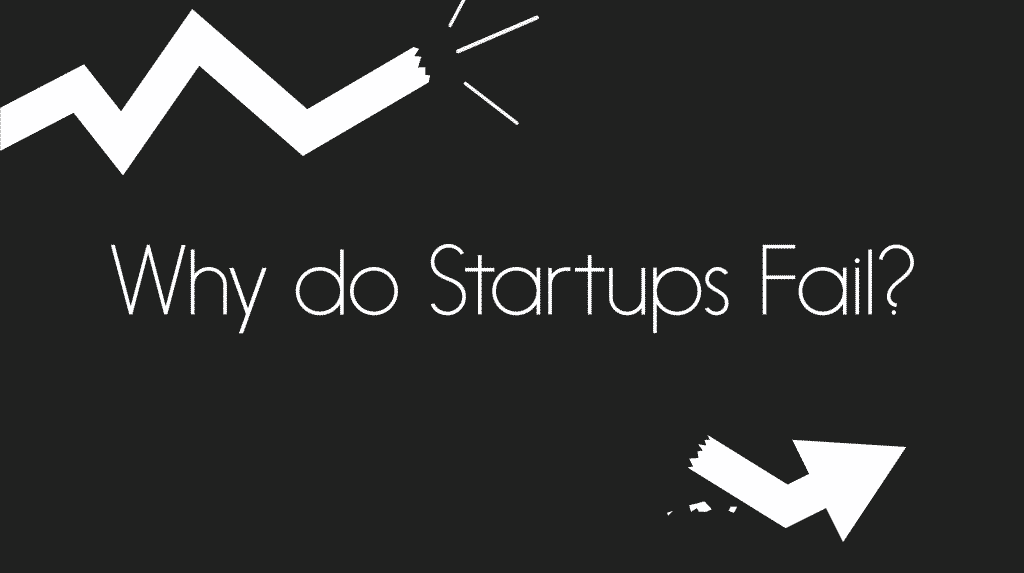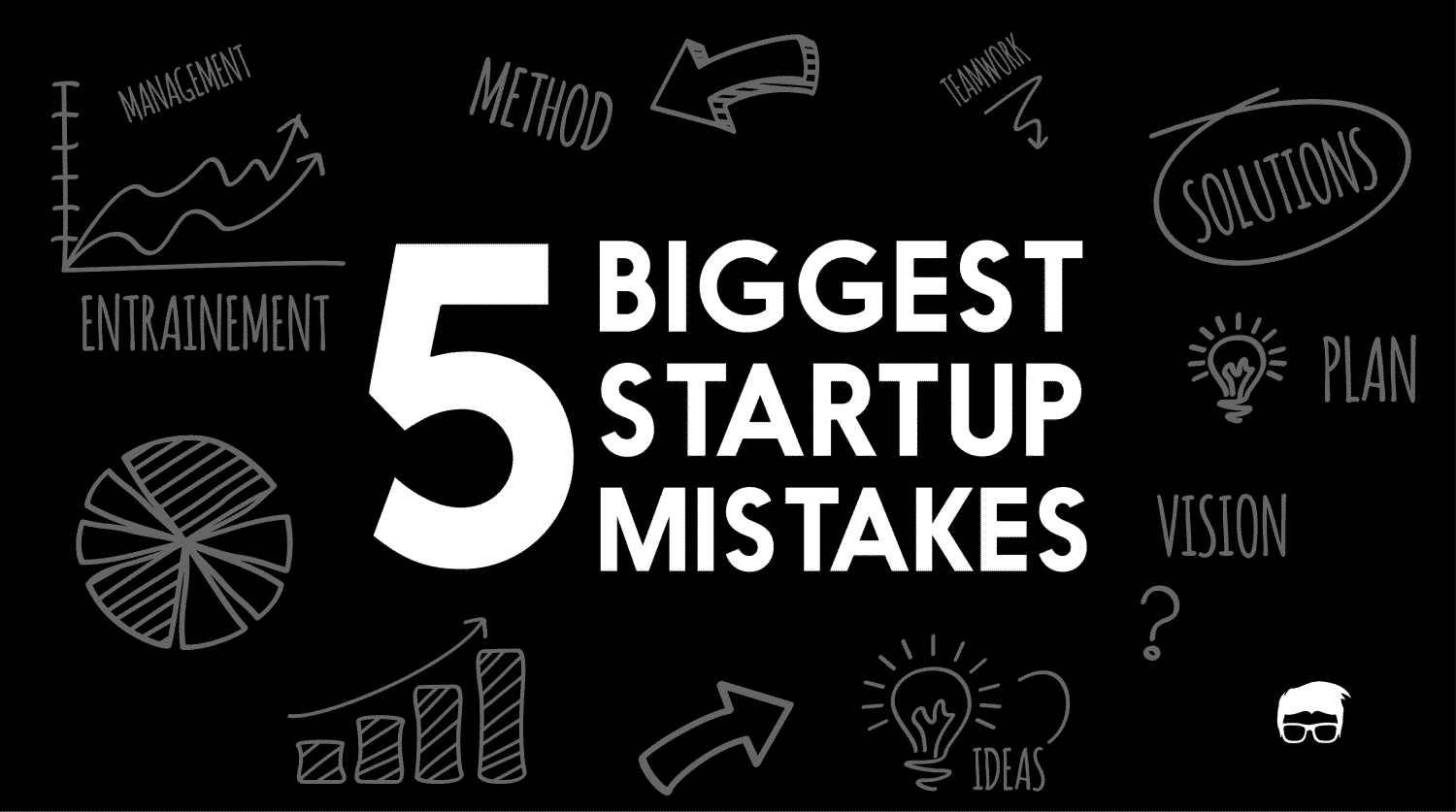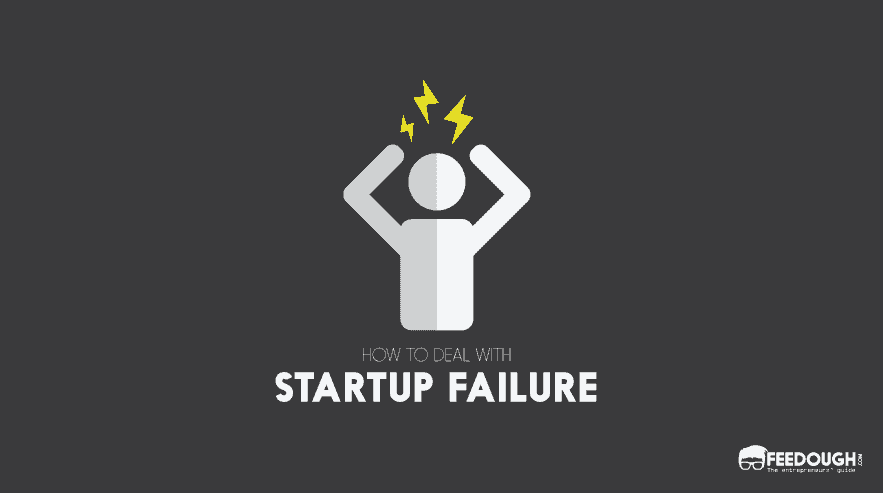Startups are inherently riskier than established businesses. According to CB Insights, about 70% of startups fail usually within 20 months of raising finance.
Another research states that amongst the US startups:
- 20% fail in their first year,
- 50% fail within five years, and
- 70% fail within ten years.
With a failure rate this high, it’s important for you as an entrepreneur to know the most common reasons why startups fail, so you can try to avoid them.
While a reason is easy to define, it’ll be hard for you to notice it before it’s too late. So along with the reasons, we’ll also try to decode the patterns that lead to such startup failures.
No Market Need
Evidently, the most common reason for startup failure is simply no market need for the product or service they’re offering.
This startup failure reason can be credited to the reverse process that most entrepreneurs follow while starting up.
Instead of –
Identifying the problem -> finding the solution -> building a product -> monetising it
Entrepreneurs choose to follow this –
Building a product -> identifying a problem related to the product -> aligning the solution -> monetising it
The problem with this process is that the entrepreneur might build something that no one needs or worse, something that already exists in the market.
Take this for example – when Google Glass was released, it was an innovative product that no one had seen before. However, even though the product was new and different, there wasn’t a large enough market for it. People didn’t want to wear glasses with a screen in them and it quickly became apparent that Google Glass would not be a successful product.
As a result, Google Glass failed.
To prevent this from happening, it’s important to ensure a market for the product or service before investing time and money into developing it.
You can do this by filling a value proposition canvas, doing in-depth market research and finding the problem-solution fit and the product-market fit.
Cash Crunch
Money is the lifeblood of any business, especially startups. It is the key resource that is needed to keep the business running and to help it grow.
If a startup doesn’t have enough money, it will quickly run into trouble.
And cash crunch is one of the most common reasons why startups fail.
A startup can run out of cash because of the following reasons:
- Failure to raise new capital
- Bad allocation of resources
- Mismanagement of funds
- Too much spending
- Lack of revenue
- Investors pull out their money
One example of a startup that ran into cash flow problems is Skully.
Skully was a motorcycle helmet startup that ran into trouble because it was overspending and mismanaging its funds.
The company raised $15 million in four rounds of funding, but it wasn’t able to manage its money well and ran out of cash.
In 2016, the company had to lay off most of its staff and shut down operations primarily because it ran out of money and couldn’t raise further funding (because of conflicts with early investors).
The company couldn’t complete the production of the $2,000 pre-ordered helmets and filed for bankruptcy in 2016.
To protect your startup from failing due to a cash crunch, make sure:
- You have a handle on your finances and are spending wisely,
- You have a plan for how to raise further funds if needed (hint: focus on cash runway),
- Your revenue model is sound.
Competition Challenges
You might feel that being outcompeted is something that might not be a big deal for your startup because, after all, you’re the one who brought the idea to the market.
But being outcompeted is an actual threat to any business and can quickly lead to failure if you’re not careful.
In fact, 20% of the startups in CB Insight’s study cited competition as the primary reason for their failure.
Competition can come from many places.
It might be a new entrant to your market with a better product or service, an established player that enters your market, or even another startup that can execute better than you.
Whatever the source, if you’re not prepared to deal with competition, it can quickly lead to the downfall of your startup.
A big example of startup failure because of high competition is Digg.
Digg was a social news website that allowed users to submit and vote on content.
It was incredibly popular in the early 2000s, but as competition from other social news sites like Reddit and Twitter increased, Digg struggled to keep up.
This eventually led to its acquisition by Betaworks in 2012.
Just keeping an eye on the competition and being prepared to adjust your own plans accordingly can help you avoid a similar fate.
Unviable Business Model
A business model is how a company operates and makes money.
It forms the backbone of any business and needs to be strong and sustainable for the company to succeed.
A startup will eventually fail if it doesn’t have a viable business model.
By viability, we mean a model that can generate enough revenue to cover costs and ultimately turn a profit that can sustain the business in the long run.
Your business can choose any of the several types of business models out there. But the model should suit your company, product, and target audience. It also needs to be scalable so you can grow as your customer base expands.
An example of such failure is the case of the e-commerce startup Peppertap.com.
The company built its business model around the online delivery of groceries in India. But it ran into trouble when it had to confront the reality of the country’s infrastructure. But instead of the road its competitors took, it decided to serve even Tier 2 and Tier 3 cities.
However, there was a lack of last-mile connectivity, making it difficult for the company to reach its customers in tier 2 and 3 cities. This resulted in high delivery costs and ultimately forced the startup to shut down in 2016.
Developing a viable business model is essential for any startup. For you, this means having a clear understanding of your target market, your customers, and your industry. You also need to understand the costs associated with your business model and have a plan for how you will generate revenue.
Not Competent Team
A startup is only as good as its team. This means you need to have a team with the skills and experience necessary to execute your business plan. If your team is not competent, it will be difficult to make your startup a success.
You can see team incompetency in the following cases:
- Bad management: If your team is not managed well, it will be challenging to get things done and make progress. This can lead to a lack of direction and confusion among team members.
- Lack of skills: You will likely struggle if your team does not have the skills required to execute your business plan. Make sure that you have a team in place that has the skills and experience necessary to succeed.
- Lack of experience: Startups often fail because they do not have the right mix of experience on their team. If your team is not experienced enough, you will likely make mistakes that could be costly.
- Not loyal to the team: Startups are often built on relationships and trust. If you are not loyal to your team, it will be difficult to build a successful business.
An example of startup failure due to a lack of experience is Theranos. The company was founded by Elizabeth Holmes, who dropped out of Stanford University at age 19 to start the company.
The company promised to revolutionise the blood-testing industry with its new technology, but it was flawed. The CEO and founding team were accused of lying and gaining millions in funding through false pretences. In fact, the company actually performed the tests using traditional methods, not the new technology they had developed. The company failed due to a lack of experience and inflated promises.
To avoid falling into the same trap, do your research, have a solid business plan, and be realistic about your company’s potential.
Legal Challenges
Legalities play a big role in business. Startups have to ensure they’re adhering to all the laws and regulations in their industry, as well as any tariffs, zoning, and environmental protections that may apply to them.
One company that ran into legal trouble was Coolest Cooler. Even though this Kickstarter campaign raised more than $13 million, the company couldn’t keep up with the increased tariff by the US government on products imported from China. This led to major production delays and a lot of unhappy customers.
It’s important to clearly understand the legal landscape before starting your business. Hire or consult a lawyer and a CA to help you figure out what permits, licenses, and insurance you need.
Mistimed Product
Launching too early or too late can be detrimental to your business. You need to ensure that there is a demand for your product or service and that you have the right team to execute your vision.
Around 10% of startup failures are due to a mistimed product launch. But most times, mistimed products can be corrected by pivoting your business model or finding a new market. This process, however, takes time, money, and a lot of effort.
In fact, Java was a mistimed product. It was originally designed for interactive television, but the market wasn’t ready for it. As a result, the team had to pivot and focus on creating a web browser that could run Java applets.
Investor Issues
Investors can be both a startup’s best friend and worst enemy. They provide the funding that allows startups to grow, but they also have a lot of control over the company.
One common issue is when investors try to interfere too much in the business’s day-to-day operations. This can be frustrating for entrepreneurs who want to maintain creative control over their products.
Another problem is when investors include a lot of terms and conditions in their investment agreements. This can make it difficult for startups to raise additional funding or sell the company down the line.
Roomstonite, a startup that aimed to be the Airbnb for last-minute hotel bookings, failed of a failed funding round where it was successful in raising $1.5 million from angel investors but the funding was probably late or never received. This put the company in a tough financial position and it eventually had to shut down.
Handling investors is a tough nut to crack. You should have a sound knowledge of term sheets, investment agreements, and what your company is worth before sitting down at the negotiating table.
Moreover, involve lawyers and other professionals to help you with the process so that you don’t make any mistakes that could come back to bite you later on.
Team And Internal Problems
An incompetent team is one story; a toxic team is another.
No matter how talented and skilled individuals are, it’s all for nothing if they can’t work together.
Startups are built by teams, and if the team members don’t get along, it will have a negative impact on the company culture, productivity, and morale.
This was the case with the startup Housing.com.
The co-founder and CEO, Rahul Yadav, was known for his abrasive and arrogant behaviour. He wanted to take the company to a different direction it was originally supposed to go and he didn’t hesitate to voice his opinion, no matter how controversial it was.
This created a lot of tension within the team and the investors which eventually led to him being ousted from the company.
Team synergy is essential for a startup because it’s a small company and everyone needs to be on the same page in order to achieve the common goal.
Pricing Issues
Customers are always looking for a good deal and will often choose the cheaper option, even if it’s not necessarily the better product.
You need to understand the customer persona and purchasing power to set the right price for your product.
If you price your product too high, you’ll miss out on potential customers; if you price it too low, you won’t make enough profit to sustain your business.
Utrip is a great example of a company that got its pricing wrong.
The travel planning startup used AI and user recommendations to create custom itineraries for travellers.
However, their revenue model didn’t support the costs associated with sales, marketing and keeping the recommendation engine alive. This led to Utrip shutting down in 2019, seven years after it started.
Acquisition Gone Wrong
Sometimes, it’s not the startup itself that fails, but rather the failure can be a result of an acquisition by a company with not-so-growth-oriented plans.
This was the case for Tumblr, which was acquired by Yahoo! in 2013 for $1.1 billion.
Once a darling of the social media world, Tumblr saw a decline in users and engagement soon after the acquisition.
Yahoo! ignored Tumblr’s userbase’s demands and only wanted to expand its advertisements inventory, which led to a further decline in users.
Eventually, Tumblr was sold to WordPress.com owner Automattic Inc. for less than $3 million in 2019 – a far cry from the $1 billion it was originally bought for.
Bottom-Line?
Startups also fail for various reasons outside of this list, but this should not deter you from starting up. No one said this would be easy. But if you do not want to perish like 90% of startups, you better avoid these common pitfalls. You will need lots of perseverance to succeed as a startup. You need to constantly plan, execute, track the results and learn from your mistakes. Plan well, don’t be short-sighted, keep your ego aside and be flexible to ever-changing market dynamics.
Go On, Tell Us What You Think!
Did we miss something? Come on! Tell us what you think about our article on Why startups fail in the comments section.
A startup consultant, digital marketer, traveller, and philomath. Aashish has worked with over 20 startups and successfully helped them ideate, raise money, and succeed. When not working, he can be found hiking, camping, and stargazing.






![How To Get Startup Funding [The Complete Guide] startup funding guide](https://www.feedough.com/wp-content/uploads/2022/08/startup-funding-guide.webp)

